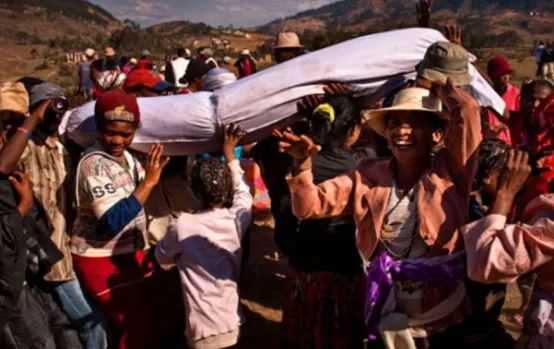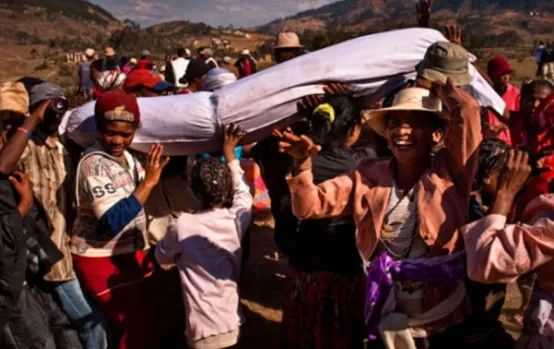In Madagascar, a remarkable and deeply ingrained tradition known as famadihana, or "dancing with the dead," continues to thrive, bridging the gap between the living and the deceased. This unique ritual is an integral part of the Malagasy culture, celebrated with great enthusiasm and respect.

Source: Images from the Internet, if there is any infringement, please contact the removal of
During famadihana, which typically occurs every three to seven years between June and September, families come together to exhume the bodies of their ancestors from their tombs. The remains are carefully rewrapped in fresh, often colorful cloth, symbolizing a new beginning and a connection to the past. Accompanied by lively music played on traditional instruments such as trumpets, drums, and the melodious sodina flutes, the family members, often the male descendants, lift the wrapped corpses onto their shoulders and dance around the tomb. The atmosphere is filled with joy and celebration, as the living believe that through this dance, they can communicate with their ancestors, seek their blessings, and maintain a strong bond with the family's heritage.
This practice is not only a form of remembrance but also a way to strengthen family ties and community spirit. As the Malagasy people believe that the departed act as intermediaries between the living and the supreme being, treating the ancestors well is thought to bring good fortune to the family and the community. Despite facing some opposition from certain religious groups and concerns about the spread of diseases like the plague, famadihana remains a cherished and vibrant tradition, standing as a testament to the rich cultural heritage of Madagascar.


